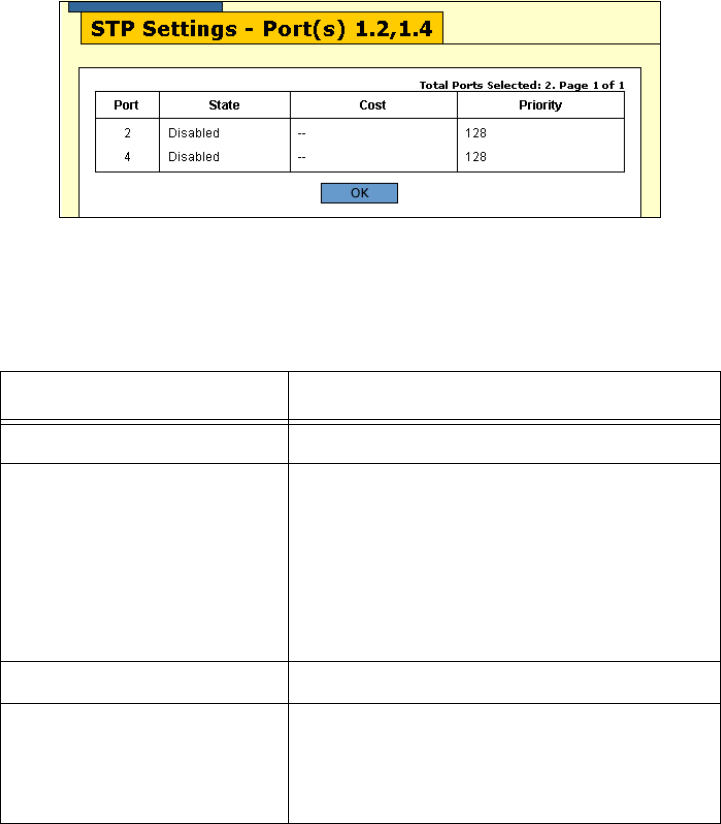User Manual
Table Of Contents
- Contents
- Figures
- Tables
- Preface
- Section I
- Basic Operations
- Chapter 1
- Basic Switch Parameters
- Chapter 2
- Port Parameters
- Chapter 3
- SNMPv1 and SNMPv2c
- Chapter 4
- MAC Address Table
- Chapter 5
- Static Port Trunks
- Chapter 6
- Port Mirroring
- Section II
- Advanced Operations
- Chapter 7
- File System
- Chapter 8
- File Downloads and Uploads
- Chapter 9
- Event Logs and the Syslog Client
- Chapter 10
- IGMP Snooping
- Section III
- SNMPv3
- Chapter 11
- SNMPv3
- Configuring the SNMPv3 Protocol
- Enabling or Disabling SNMP Management
- Configuring the SNMPv3 User Table
- Configuring the SNMPv3 View Table
- Configuring the SNMPv3 Access Table
- Configuring the SNMPv3 SecurityToGroup Table
- Configuring the SNMPv3 Notify Table
- Configuring the SNMPv3 Target Address Table
- Configuring the SNMPv3 Target Parameters Table
- Configuring the SNMPv3 Community Table
- Displaying the SNMPv3 Tables
- Displaying the User Table Entries
- Displaying the View Table Entries
- Displaying the Access Table Entries
- Displaying the SecurityToGroup Table Entries
- Displaying the Notify Table Entries
- Displaying the Target Address Table Entries
- Displaying the Target Parameters Table Entries
- Displaying the SNMPv3 Community Table Entries
- Section IV
- Spanning Tree Protocols
- Chapter 12
- Spanning Tree and Rapid Spanning Tree Protocols
- Section V
- Virtual LANs
- Chapter 13
- Port-based and Tagged VLANs
- Section VI
- Port Security
- Chapter 14
- 802.1x Port-based Network Access Control
- Index

Chapter 12: Spanning Tree and Rapid Spanning Tree Protocols
194 Section IV: Spanning Tree Protocols
Figure 75. STP Settings Window
The columns in the STP Settings window are described in this table:
8. Click the OK button to close the window.
Restoring the
STP Default
Settings
To restore the default values to the STP parameters in the stack:
1. From the Home page, click the Configuration button.
2. From the Configuration menu, click the Layer 2 button.
3. Select the Spanning Tree tab, shown in Figure 70 on page 184.
4. Verify there is no check in the Enable Spanning Tree check box. If
there is a check, click the option to remove it. You have to disable
spanning tree before you can restore its default settings.
5. Click the Configure button to display the Configure STP Parameters
tab shown in Figure 71 on page 187.
Table 34. STP Port Settings
Column Definition
Port Displays the port number.
State Displays the current state of a port. The
possible states are Listening, Learning,
Forwarding, or Blocking when spanning
tree is enabled on the switch. When
spanning tree is not enabled on the switch
or if a port is not being used, its state will
be disabled.
Cost Displays the port cost of the port.
Priority Displays the port’s priority value. The
number is used as a tie breaker when two
or more ports have equal costs to the root
bridge.










